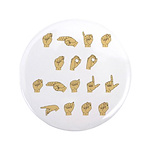I’m considering switching to linux but I’m not a computer savvy person, so I wanted to have the option to switch back to windows if unforeseen complications (I only have 1 pc). Is it just a download on usb and install? And what ways can I get the product key or “cleaner” debloated versions.
It depends on how far down the rabbithole you go.
I switched to Linux 27 years ago. My wife asks me to help her with her Windows computer every now and then, and I can’t really do it for more than a few minutes before my blood pressure is in the risk zone.
I switched 4 years ago and I experience the same. But to be fair, I also use an atypical setup designed for efficiency, so basically the opposite of windows in every aspect.
similar here. im still ‘new’ to linux but have to use windows for my apprentice. also my father uses windows. so often i have to click a button multiple times, ads, or window not responding, ads, sometimes its slow af. did I already mention ads?
so often i have to click a button multiple times, ads, or window not responding
Maybe you should use something faster than a potato as a computer. 😂
did I already mention ads?
If you’re capable of installing Linux and getting a productive desktop experience with it I’m sure as shit you are also capable of disabling a few toggles under Windows.
Potatoes are free hardware though? You can grow them yourself, study the source code, make changes to it and release it for others to use. Pretty sure you can’t do that with most modern computers
i love that comment😂
You can install Linux on a flash drive to test it out. Or spend $50 on a SSD and just have both
It’s not the fanciest solution, but if you’re really not sure what you’re doing, not wiping out your Windows in the first place could be the best option.
I mean physically wiping out the disk is. Yes.
Install Linux in a VirtualBox virtual machine to try it out. No change to your existing Windows system is needed.
Better: install it in a virtual machine on a second hard drive: if you like it and you’re ready to switch, switch to booting the real Linux hard-drive and turn the Windows hard drive into the virtual machine, to use within Linux when you need it.
If you switch to Linux, this will happen:
-
It’s gonna be tough: it’s a different system, you’re not used to it. Like everything else, it’s hard to change and get used to new things. So realistically expect some learning curve and some pain. It’s normal.
-
If you give it an honest shot but you decide Linux is not for you, you’ll switch back to Windows. You’ll be back to your old normal, but you’ll start to notice how infuriating and spirit-crushing it is a lot more, having been exposed to a non-insane, user-centric OS for a while. And then you’ll be that much sadder in Windows and you’ll wish you had the best of both OSes - which you can’t.
Just be aware than exposure to a non-Windows OS will probably make you hate Windows more and make your life in Windows ever slightly more miserable, even if you don’t stick to the non-Windows OS.
-
You dont even install. You download, write to usb and try linux.
Give it a good hour or more, trying to do a couple basic things like browsing the web, using some apps.
If you find yourself liking the experience, hit install and go dual boot. You can then decide on every boot if you need windows or linux today.
In case you feel like getting rid of windows, you can just disable the item in the boot menu (tutorials online) i guess.
So as you see, there are many failsafes which you can use to not get stuck without a computer that you understand.
Have a good one.
@FemboyNB@lemmy.blahaj.zone fyi, when you run Linux off of a USB drive (aka live USB), it’s likely going to run a lot slower than when installed on an SSD. Just take that into account when you’re testing it if you go that route. I wouldn’t want you to think Linux is slow as frozen molasses and forgo the full experience because of a misunderstanding.
To that point it’s probably going to be a lot slower than running it on an HDD too. That said, the USB performance is surprisingly good when you consider you’re literally running an OS over USB and the OS isn’t even in an optimized state.
I would agree way this, with one caveat: Does OP plan to game on Linux?
Gaming on Linux has come very far, but it’s not perfect and not something you can really get a feel for in a USB live environment. At that point rather to dual boot and try sticking with Linux for a while.
Uhm… you do realize that dual booting is step two in what I said right?
You’re right, my bad.
Hi!! 👋☺️
The easiest way to preserve an existing Windows installation is to take out the drive it’s on and put in a new drive for Linux. That way if you want to go back, you can just swap in the old drive again. Installing M.2 or SATA drives is very easy and 100% doable even if you’re not an expert.
this 👆 dual boot doesn’t always work because windows can be finicky with boot partitions as well as boot partition security issues. Save yourself a headache if you want to go back, just pop your current drive out, and put it in a external case so you can access the files. Hard drives are cheap.
There’s no turning back…
Objection. I ran Ubuntu for 6 years but returned to Windows because too many things were just a little bit too odd, too off, too hands-on-config-files.
To be fair, the newer versions of Windows suck hard. 10 was really bad, 11 is horrific. I dream of going to Debian some day.
Ifnyou have the money and the mono slots, buy another hard drive and install Linux there. Then, boot that drive without touching anything from the other ones. You can even load them up and use those files no problem.
WOAA-OH
MY PRESENCE FADES TO BLACK
It isn’t all that difficult to install a dual-boot setup, so you can choose at startup which OS to use.
Bingo. I haven’t had a windows install mess up my bootloader in a while, granted I haven’t booted my windows partition in a while either. As long as you create a separate partition for the bootloader, it’s stupid easy to fix with a liveusb.
Just because no one else is mentioning it, there’s a free tool in github to activate any copy of Windows, that could be on a new machine, a VM, Windows To Go, etc. You don’t need a product key.
Link for those that want to check it out for research purposes.
Edit: It works with Office too
It’s you have a big storage device you can just partition it and have dual boot, or if you need to use windows stuff you can always virtualize it with Virtualbox for example.
Answering you question, you just need to download the windows iso and use MAS(google it) to activate windows/office permanently. But anyway nowadays isn’t required to activate windows unless you want to change how your desktop looks.
Something I only saw mentioned in a somewhat snarky comment in this thread (apologies if I missed it elsewhere) is that Windows has the option to do a full system image backup.
If you have an external hdd or a nas, from the Windows Backup applet in control panel (not settings) you can create a system image that will contain a full backup of your C: drive and, optionally other drives in your system. You can then restore that backup from the recovery options in your windows install media.
For the windows install media, I’d recommend using the windows media creation tool to create a usb installer on a separate usb key from your Linux installer and then setting it aside just in case. Trying to create windows install media from within Linux is, while not impossible, difficult.
Obviously, you should do all of this before committing to installing Linux to disk. Most Linux install media also functions as a live Linux environment from which you can try things out and see if things will work for you.
Recent iterations of Windows have been easy to install, esp. when using an entire drive. I (almost) never had issues.
As long as you’ve got a Microsoft account
Windows, in the past has been known to sometimes overwrite the Linux boot loader after a windows update, so be careful with that, since windows assumes no other os exists in the universe. Depending on your windows version, it might not be a bad idea to backup the license key. Recent versions store your computer’s information in the cloud, so unless you change a lot of components, it should reinstall without much hassle. But it doesn’t hurt to extract the key just in case. Microsoft gonna Microsoft. There are tools for this. E.g. jellybean key finder (or something like that).
Depending on the distro, it might help to disable secure boot in the uefi bios.
That being said, take it one step at a time. Don’t try to recreate everything you were doing in windows right off the bat. Get comfortable with the desktop first. Try different apps for certain tasks. If you have an Nvidia GPU, the experience can vary greatly between different distros. As others have mentioned, most distros have a “live environment” on the installation cd, which you can test to see if your hardware is recognised straight away. That being said, don’t feel like you’re married to a specific distro. Most Linux users will distro hop quite a bit, before they settle on one that just feels right. And even then they might change again after a while, if they get bored.
Windows, in the past has been known to sometimes overwrite the Linux boot loader after a windows update.
Linux (ubuntu) do that pretty often too, people just don’t notice it because they’re unlikely to be running any other bootloader if they have Linux’.
Yes, but if e.g. openSuSE installs its Grub 2 on top of Ubuntu’s Grub 2, you end up with a different theming. If Windows overwrites the bootloader, the Linux boot options are gone.
If you’re comfortable with swapping out components in your PC, just buy a second SSD. Remove the Windows drive, put Linux on the new drive. If Linux doesn’t work out for you, just swap them back.
You could also run a live Linux distribution from a USB stick, or potentially install Linux onto a USB stick or SD.
Get a second SSD, install there
Yeah but make sure you disconnect your Windows SSD before doing anything.
You can keep windows and install Linux next to it.
The best way would be to add a new ssd or m.2 card to your pc and install Linux on that. Make that the main boot device and Linux normally will detect Windows and give you a boot menu where you can chose between Linux and Windows each time you boot.
Alternatively you can resize the windows partition and install Linux onto free space on your main drive. This is more fiddly and things can go wrong with this if you don’t know what you’re doing.
You can also boot Linux on an external USB drive but this will be slower and may guge you a false impression of Linux. You can also try Linux in a virtual machine like Virtualbox but again this will be slower and will give you a false impression of Linux as a daily driver OS.
I personally run a dual boot system - I have two m.2 nvme drives, one with windows and one with Linux. I barely use the windows partition now but I keep it around for rare work stuff or the rare occasion I have a game I can’t get to run in Linux. And I mean rare - booted Windows maybe 3 times in last 6 months.



















